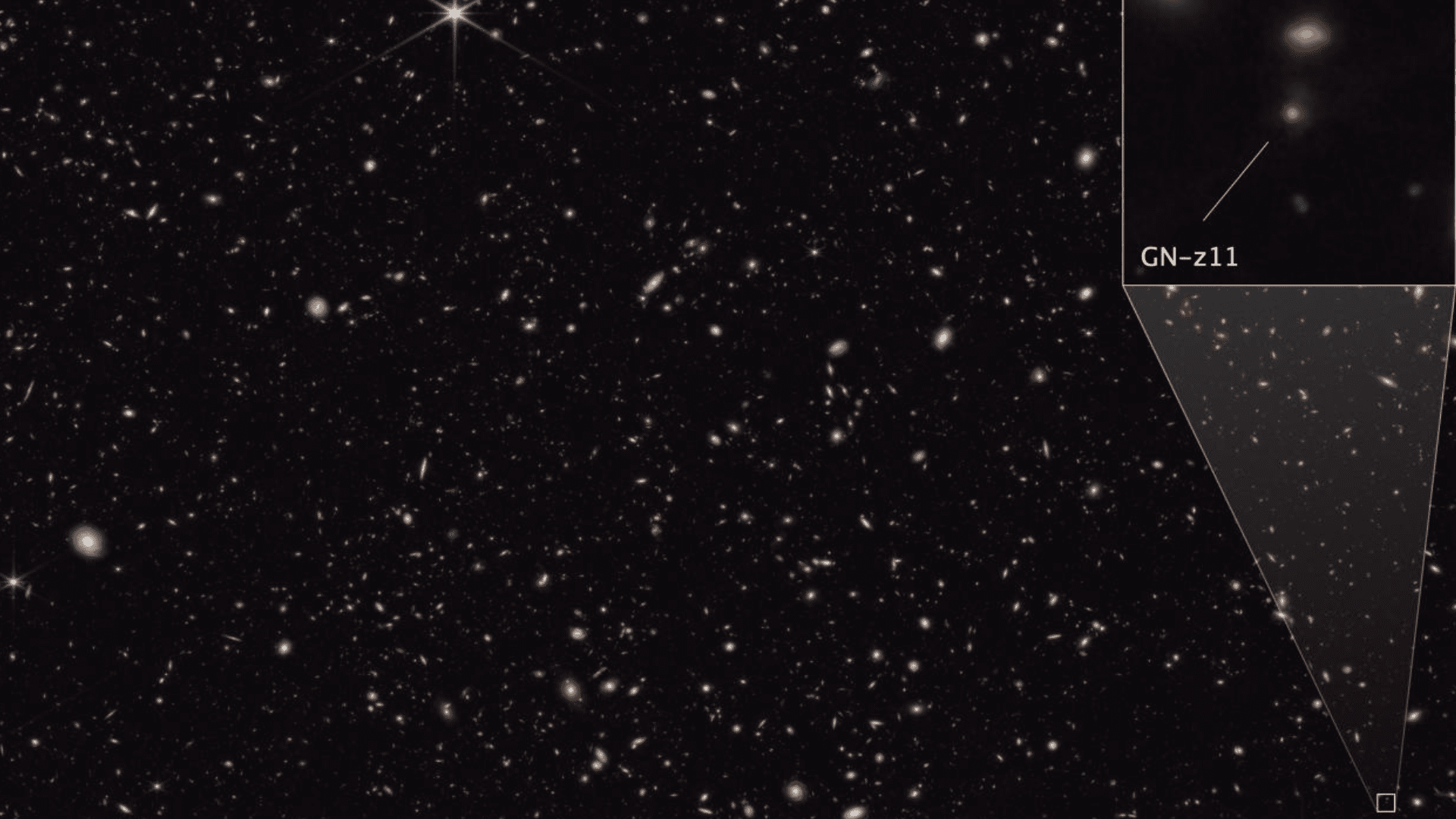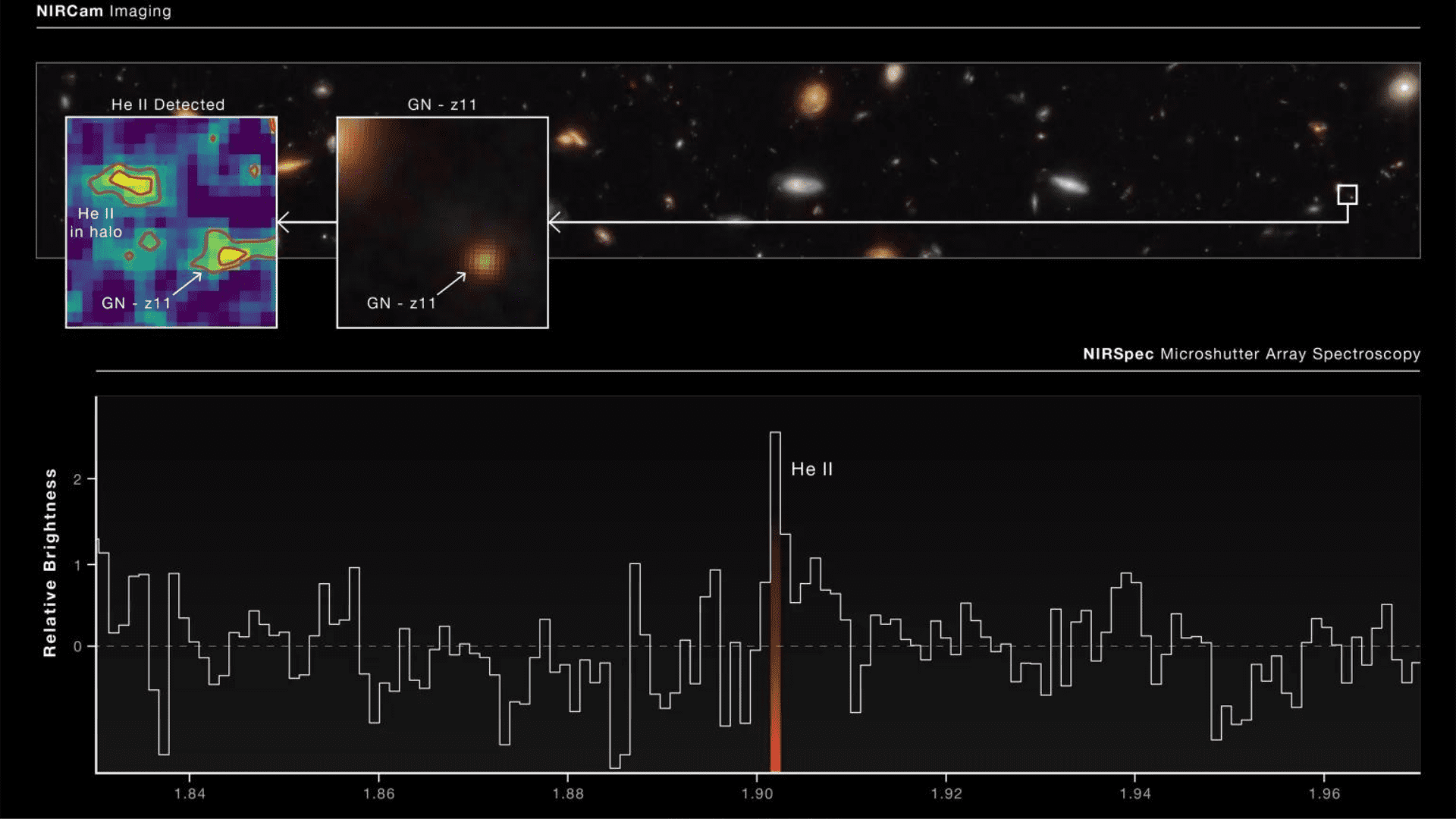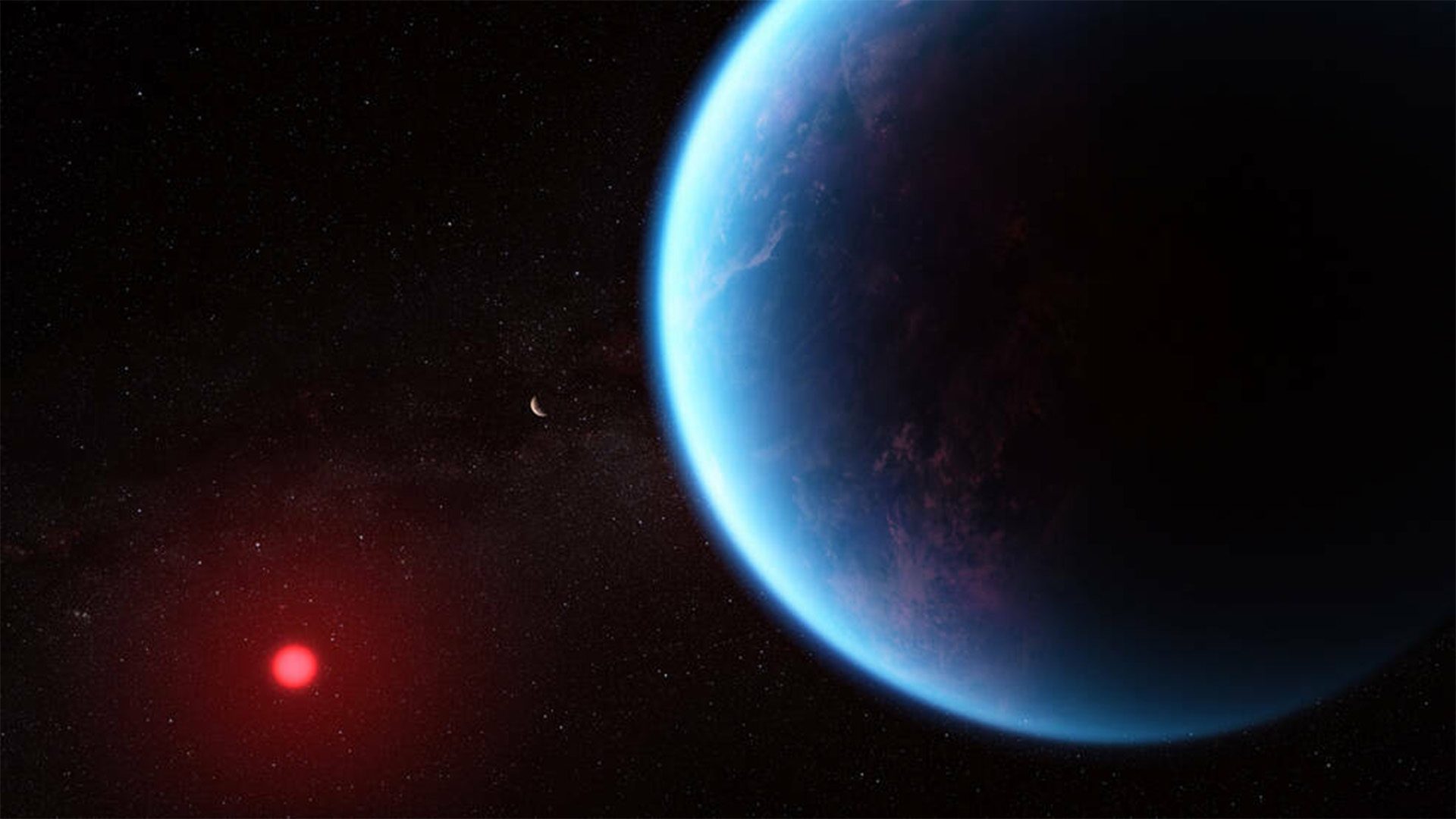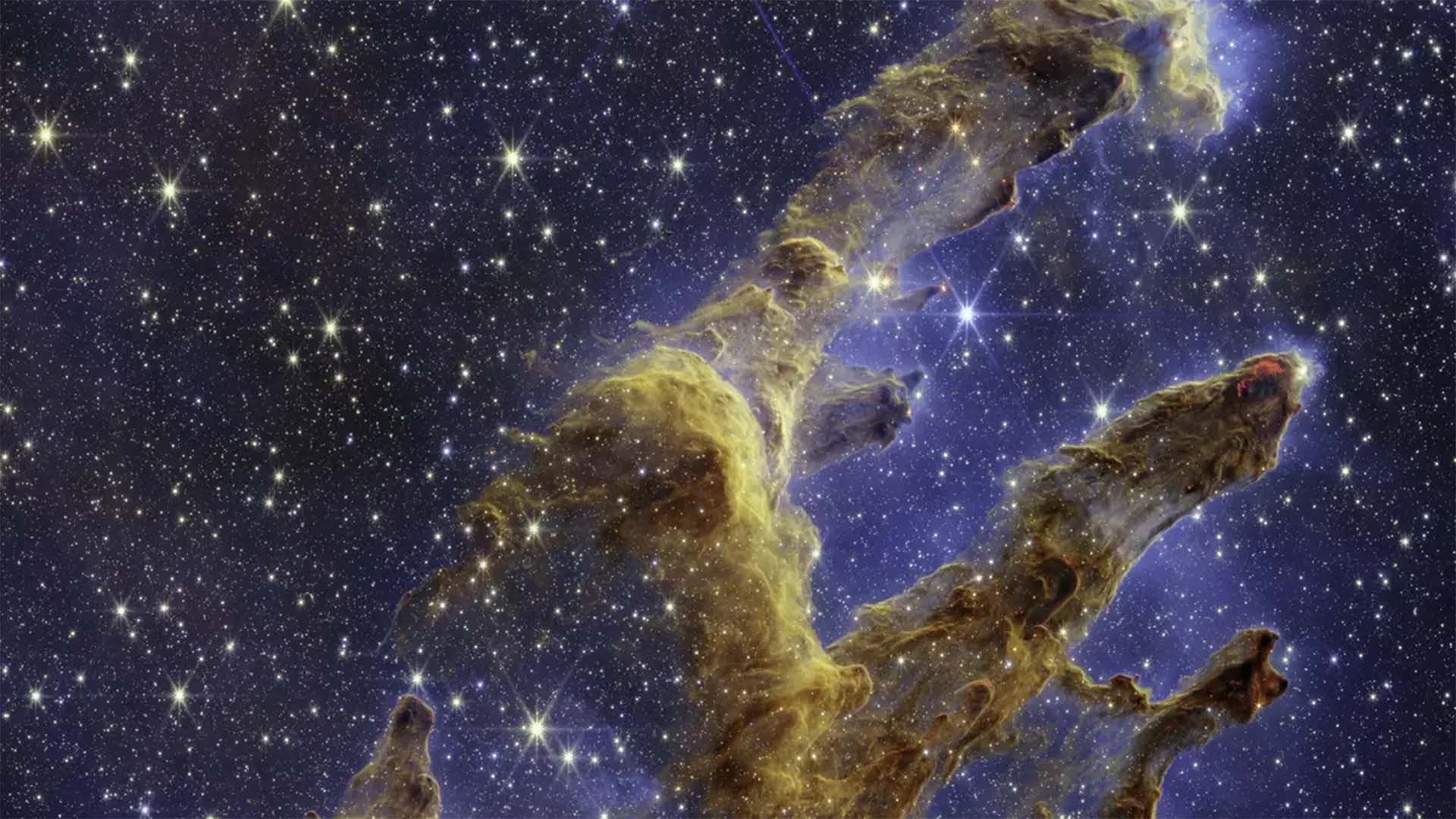Deep into time and space, the James Webb Space Telescope studies the luminous galaxy GN-z11. When NASA’s Hubble Space Telescope initially detected the galaxy, it was the youngest and most distant ever observed. Because of how bright it is, it challenged scientists trying to find out why. Thanks to the Webb Telescope, scientists are uncovering some of those secrets.
Most Distant Black Hole Ever Found

The team studying GN-z11 with Webb found evidence of a central, supermassive black hole rapidly consuming matter. This is the first time finding evidence that the galaxy is hosting a supermassive black hole. This finding also makes it the farthest active supermassive black hole ever spotted.
Principal investigator with the Cavendish Laboratory Roberto Maiolino said, “We found extremely dense gas that is common in the vicinity of supermassive black holes accreting gas.” Maiolino explained how it’s the first time researchers uncovered evidence like this. “These were the first clear signatures that GN-z11 is hosting a black hole that is gobbling matter.”
Explore Tomorrow's World from your inbox
Get the latest innovations shaping tomorrow’s world delivered to your inbox!
I understand that by providing my email address, I agree to receive emails from Tomorrow's World Today. I understand that I may opt out of receiving such communications at any time.
Why GN-z11 Is So Bright
Maiolino and his team used the Webb Telescope to discover a couple of different elements that make GN-z11 so bright. There are indications of ionized chemical elements near GN-z11. These elements are typically found near accreting supermassive black holes. Additionally, there is a powerful wind coming from the galaxy. Winds with high velocities are typically driven by processes associated with supermassive black holes that are rapidly consuming matter.
Together, the evidence shows that GN-z11 hosts a 2-million-solar-mass, supermassive black hole. Because it’s in an active phase of eating matter, it gives off bright lights.
Pristine Gas Clump

A second team, also led by Maiolino, used the Webb Telescope’s NIRSpec (Near-Infrared Spectrograph) to find a gaseous clump of helium in GN-z11’s halo. Researchers are intrigued by the helium clump’s condition. Maiolino said, “The fact that we don’t see anything else beyond helium suggests that this clump must be fairly pristine.” Researchers theorized pockets of pristine gas in the halo may collapse and create Population III star clusters. These are first-generation stars formed entirely from helium and hydrogen.
Scientists say finding the stars is one of the main goals of astrophysics. They’ve never seen these stars before and they expect them to be very big, bright, and hot. The team believes the formation of the first stars and galaxies marks a fundamental shift in cosmic history. In that history, the universe evolved from a dark and relatively simple state into the complex environment we see today.
Maiolino and his teams want to explore GN-z11 in depth in future Webb observations. They want to strengthen their case for the Population III stars possibly forming in its halo.





